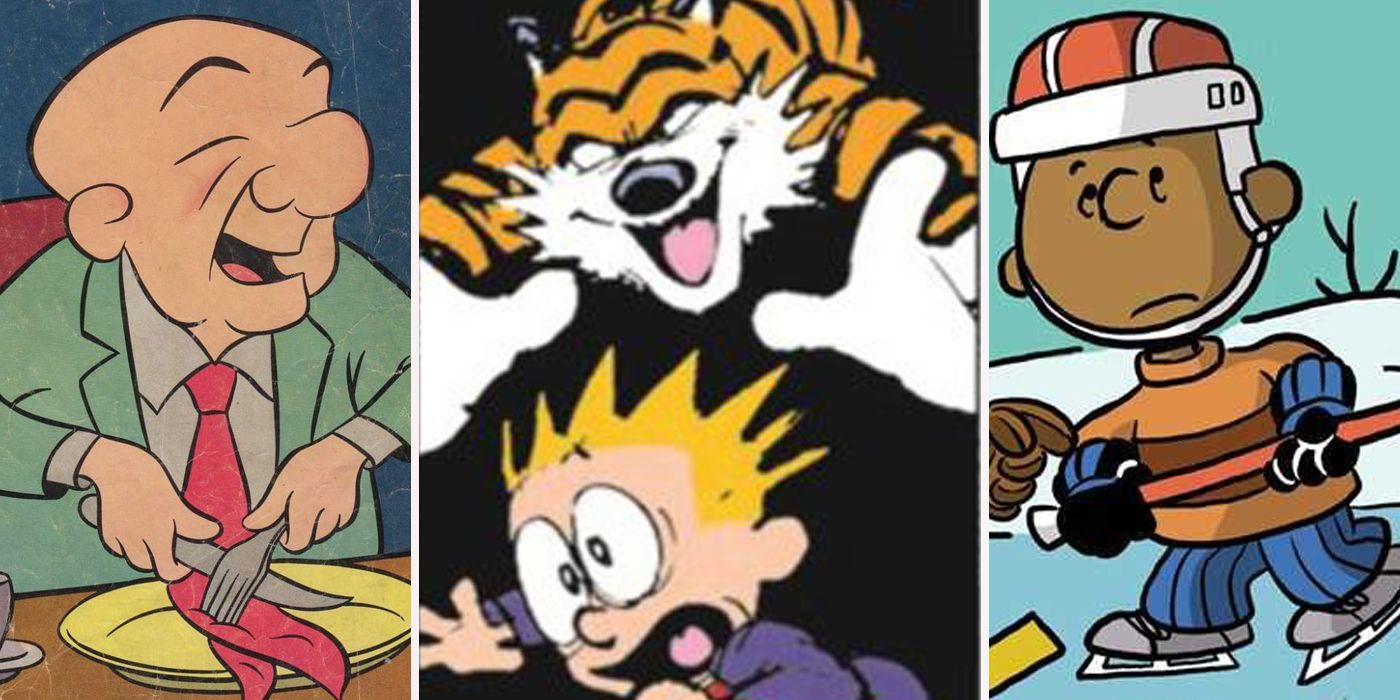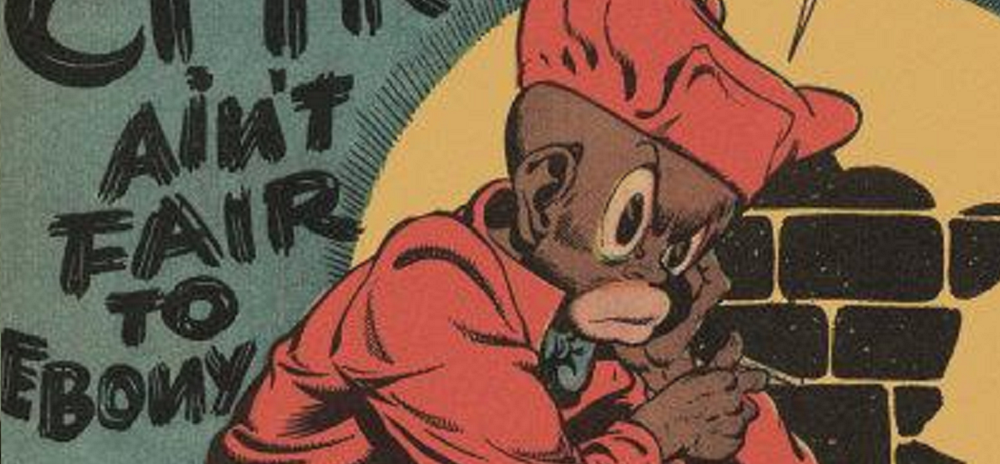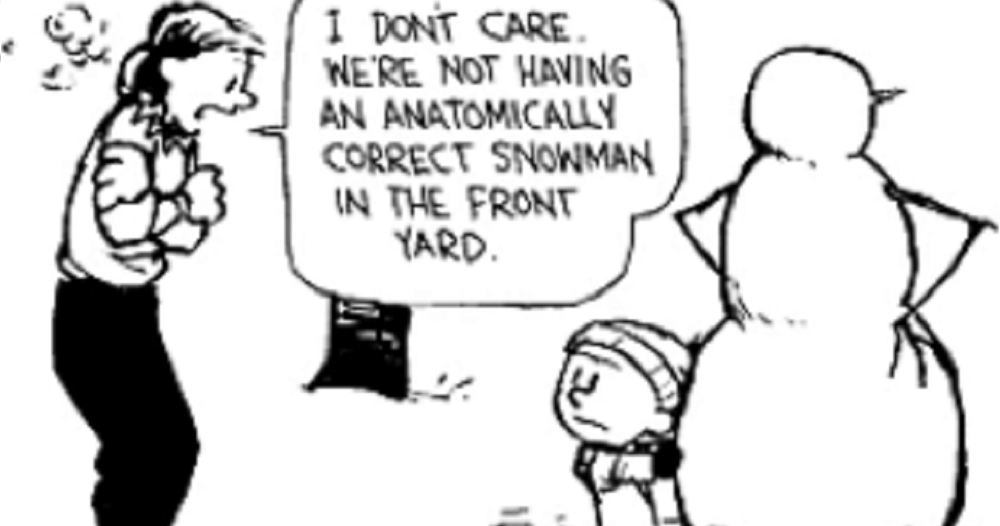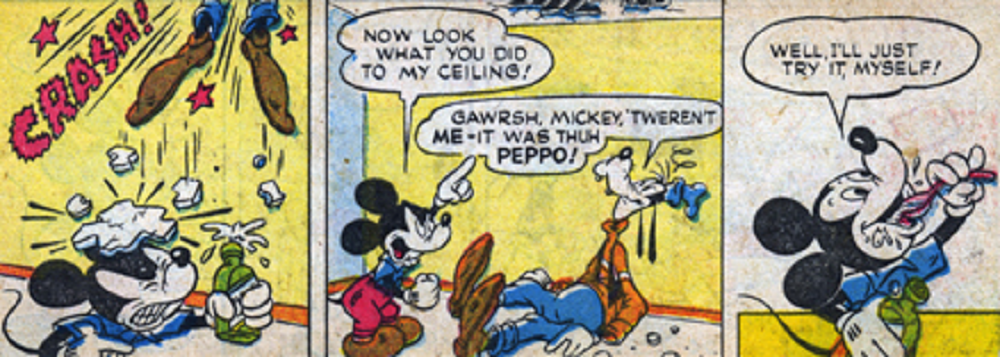Before there were comic books, there were comic strips. The first strips appeared in American newspapers in the late 19th century, and they are still going strong over a hundred years later. Even now, in an age where newspapers appear to be on the decline, comic strips live on in both their original format and in the form of webcomics. Despite competition from other forms of entertainment, they show no sign of going away any time soon. And why should they? Comic strips are fun, easily digestible bits of humor that brighten your day in 15 seconds or less.
On the other hand, comic strips can also be divisive, mean-spirited and just plain hateful. Like most other media, comic strip history is littered with content that wouldn't make it past the censors nowadays, either because of changing morals or increasing awareness that people of color are, you know, people. This list catalogs 16 of the most spit take-inducing moments from many of your favorite strips. Some of the examples are surprisingly recent while others are older than your grandmother, but they all have two things in common: a complete lack of tact, and the ability to make us recoil in horror.
15 OH, WHAT A NIGHT
Garfield is famous for being the laziest comic strip character ever. Is there anything on Earth that could get him to willingly move farther than the kitchen? There sure is: catnip! In one strip, Garfield encounters a field of the stuff. The effects are more adult than one might expect.
After uncharacteristically prancing through the catnip, Garfield wakes up in an Atlantic City alley with a hangover and a doll by his side. Judging by his narration, he can't remember what he did while in his catnip-fueled haze, but he's pretty sure it involved him doing something unspeakable to that doll. But even this was not enough to keep Garfield sober. In a later strip, he gets into the catnip again and ends up cuddling with his sworn enemy, Odie.
14 A REDESIGN MAY BE IN ORDER
Some people have come to dislike the idea of the superhero's sidekick. Their arguments mostly revolve around accusations of child endangerment, or how brightly-clad children fighting crime makes the idea of grown men in their underwear punching other grown men in their underwear seem juvenile. This is generally a matter of taste, but there is one sidekick who everyone can agree was a bad idea. That sidekick is Ebony White.
Blackface and racist caricatures were still socially acceptable when White debuted in The Spirit strip, and it shows. Back in the day, he was consistently drawn looking less human than his Caucasian costars, and he spoke in the same exaggerated dialect that all black characters used. And then there's the fact that his name is Ebony White. Shockingly, he did not appear in the 2008 film adaptation of The Spirit. Then again, he couldn't have made the movie any worse...
13 DISPROPORTIONATE RETRIBUTION
Donald Duck is not exactly famed for his even temperament. But during his days as the star of a newspaper strip, his tantrums could get downright homicidal. In one strip, hapless Goofy accidentally smacks Donald in the face with a fish he just caught. Donald, as one would expect, smacks Goofy right back, knocking him into the water.
But oh, no! Goofy can't swim! Surely Donald wouldn't let someone drown over something so minor? You underestimate the well of spite from which Donald draws. Donald throws the flailing Goofy a rope... then ties an anchor to the other end and throws that into the water, too. And this isn't the only time Donald tries to off his co-stars. In another strip, Goofy hangs from a fire escape for dear life. What does Donald do? Tickle him.
12 DO YOU WANT TO BUILD A SNOWMAN?
Calvin's disturbingly innovative snowmen tableaux are a recurring joke in Calvin and Hobbes. Usually, his creations are either dead or about to die horribly, much to his parents' consternation and the reader's amusement. But on two memorable occasions, Calvin has built snowmen that are a whole other kind of inappropriate.
One time, he built a busty snowwoman just so he could pose as an adult mocking the attention-seeking child who built it. In another strip, he did the opposite, building an anatomically correct male snowman to annoy Susie Derkins, the girl next door. While we never see the second snowman in all his glory, Calvin's mother's reaction makes it plain what it looks like from the front. Hopefully, this didn't give any of Calvin and Hobbes' younger readers any bright ideas.
11 PEPPO IN YOUR STEP
This entire strip, published by Disney in collaboration with General Mills, is hilariously head-scratching by modern standards. It starts with Goofy and Mickey Mouse partaking of a drug called Peppo, the effects of which are suspiciously reminiscent of amphetamines. Dazzled and energized by their new little helper, Mickey and Goofy decide to head on over to Africa to peddle Peppo to the natives. Ah, good, so we get some bonus racism in addition to the child-unfriendly content.
In Africa, our heroes (?) tangle with a medicine man who keeps an entire village half-asleep thanks to his own creation so he can steal from the village treasury. Mickey forces Peppo down the king's throat, thus waking him up, and successfully sells an alarmingly large amount of Peppo to the villagers. Happy endings all around!
10 PETA WILL NOT BE PLEASED
Tintin is still a beloved character, but Tintin in the Congo, originally published in the early '30s, has been rightfully excoriated as a condescending, racist mess. It depicts the native Congolese as simple-minded caricatures eager to serve the random white teenager in their midst. And that's not all -- not only do we get to see Tintin patronize the Congolese, we also get to see him abuse the local wildlife to death.
Among many, many questionable moments in this book is a scene where Tintin decides to go rhinoceros hunting. Not satisfied with more traditional hunting methods, he grabs some dynamite, tucks it into the unfortunate rhino's hide and lights the fuse. When the smoke clears, only the rhino's horn is left. How do you say "overkill" in French?
9 BIGOTRY ON ICE
Aw man, not Peanuts. That's one of the most innocuous comic strips of all time. What could Charlie Brown have possibly done to warrant a spot on this list? Well, for once not even Lucy can blame Charlie Brown for this debacle. This is all on sports fanatic and secret racist Peppermint Patty.
The strip begins when both Peppermint Patty and Franklin want to skate on the same frozen lake. Patty argues she needs the space to practice her figure skating. Franklin retorts he needs to practice his hockey so he can become a great hockey player. Patty shoots down his ambitions in as cruel and petty a manner as possible, pointing out how there are no black players in the NHL. We don't see how the fight ends, but we assume it involved Franklin's hockey stick making contact with something.
8 HOW GALLING
Asterix has never quite caught on in America, but it's been wildly popular in France since the '60s. The comic centers around life in a little Gallic village. In Asterix and the Secret Weapon, released in 1991, a bard named Bravura visits the village and takes a shine to Asterix. Unfortunately for our hero, she can't take no for an answer.
No matter how loudly and bluntly Asterix tells her to bug off, Bravura continues pursuing him. She moves into his house, repeatedly picks him up without permission and even slaps him on the behind. Asterix, in as clear a case of self-defense as we've ever seen, finally punches her in the face to end an unwanted kiss. And yet Bravura is the one who ends up filing assault charges against him.
7 A LESS PERFECT UNION
We're sure there's an interesting story to be told about the conflicting political views of Little Orphan Annie, a formerly penniless orphan from a working class background, and her obscenely wealthy adoptive father, Daddy Warbucks. Unfortunately, that is not the story we got from Annie creator Harold Gray. Gray was rabidly anti-left and not afraid to use his strip as a mouthpiece.
When unions turn up in Little Orphan Annie comics, they are unsurprisingly the bad guys. Union leaders are depicted as greedy, dues-obsessed, would-be vandals who prey on innocent, hardworking millionaires. So naturally, to emphasize what money-grubbers the union leaders are, Gray drew them looking a whole lot like anti-Semitic caricatures. Gray's work didn't always make it past the censors. Some papers refused his more overtly political strips.
6 A+ PARENTING
Little Nemo in Slumberland is truly a groundbreaking comic. First published way back in 1905, each full-page strip exquisitely depicts the often frightening dream worlds concocted by a boy named Nemo. The last panel of each strip shows Nemo waking up from his dream, often in distress. One might think his parents would show concern about his constant night terrors. One would be wrong.
While we do occasionally see his parents comfort him, more often than not, they stay off-panel, yelling at him from the next room to stop falling out of bed or to not eat certain foods before bedtime. They sometimes even threaten to spank him for daring to have a nightmare. With parents like those, is it any wonder Nemo is prone to strange and terrifying dreams?
5 WHAT'S IN A NAME?
The Beano is a long-running and much-loved British comic book. During its 80-year run, it has featured all manner of comic strips, most famous among them Dennis the Menace and The Bash Street Kids. But not all of their comics have enjoyed the same staying power, for reasons that will very shortly become obvious.
Back in the '30s and '40s, Beano's strips starred characters with names that modern readers will find amusingly inappropriate, like Little Dead Eye Dick and Cocky Dick. Now of course, these names can be explained away by the ever-changing nature of language. However snicker-worthy they may be today, they're certainly not the comic's fault. But naming a character Hard Nut the...well we can't say, is just awful no matter what decade you're in.
4 WE'RE NOT SEEING THE JOKE
Mr. Magoo started out on the big screen before making the move to comics. The jokes in the strips are about the same as the jokes in the cartoons: Magoo's nearsightedness causes trouble, either for him or for some innocent bystander. Basically, the entire premise can be summed up as "let's all laugh at the blind guy's blindness."
For this reason, Mr. Magoo fell out of favor for a while. The 1997 live-action film adaptation bombed in part due to anger from disability rights groups, although the fact that the movie sucked certainly didn't help. The bottom line is, if you're going to create a disabled character, maybe remember that "disability" is not a personality trait and develop them the way you would any other character.
3 NOT THE BEES!
It would be hard to find characters more kind and innocent than those in Winnie the Pooh. Their adventures seem quaint and even peaceful when compared with those found in other children's media. That makes it all the more shocking when Piglet starts behaving like he's in a Roadrunner cartoon.
This strip begins with Piglet gifting Pooh a jar of honey. So far, so good. But in the last panel, a swarm of bees flies from the jar and into Pooh's face. Piglet's reaction? To walk away from the swarm like a guy too cool to look at the explosion he just set off behind him. Yup, that's the entire joke. Piglet sics bees on Winnie the Pooh and then wanders off. Something's telling us the writer of this strip wasn't real familiar with this franchise.
2 SOMEONE CALL A LAWYER
Harassment is hilarious when a woman is attacking a man, right? No? Well, someone better tell that to Al Capp, the creator of Li'l Abner. Many of the strips seem to revolve around the title character, a nice but slightly dim country boy, trying to escape the attentions of large, buxom women forcing him into marriages he plainly doesn't want. This happens so often that, in one strip, poor Abner kisses a woman just for the novelty of kissing someone of his "own free will." Yikes.
As if that wasn't enough to bring down the wrath of contemporary censors, the women in question must have had the most sadistic parents in existence. They frequently have such suggestive names as Mimi van Pett, Gloria van Welbilt and, worst of all, Appassionata von Climax.
1 THE FUTURE IS GARBAGE
Some sci-fi comics look to the future with rosy optimism, depicting a world free of hatred and bigotry -- Buck Rogers does not. At the time the strip debuted in the late '20s, white Americans were still in a tizzy over Asian immigrants. According to the world of Buck Rogers, this will still be a "problem" in the 25th century.
In one early storyline, our hero has to save an America that's been taken over by "the Mongols," who have also conquered Europe and Asia. This might have seemed topical back then, but it's just about unbearable now. Let this be a lesson to all would-be sci-fi writers: if you're thinking of including contemporary prejudices in your work, don't. A century from now, you will end up looking like Buck Rogers. And this is one case where you definitely do not want to look like Buck Rogers.
















